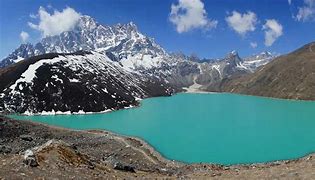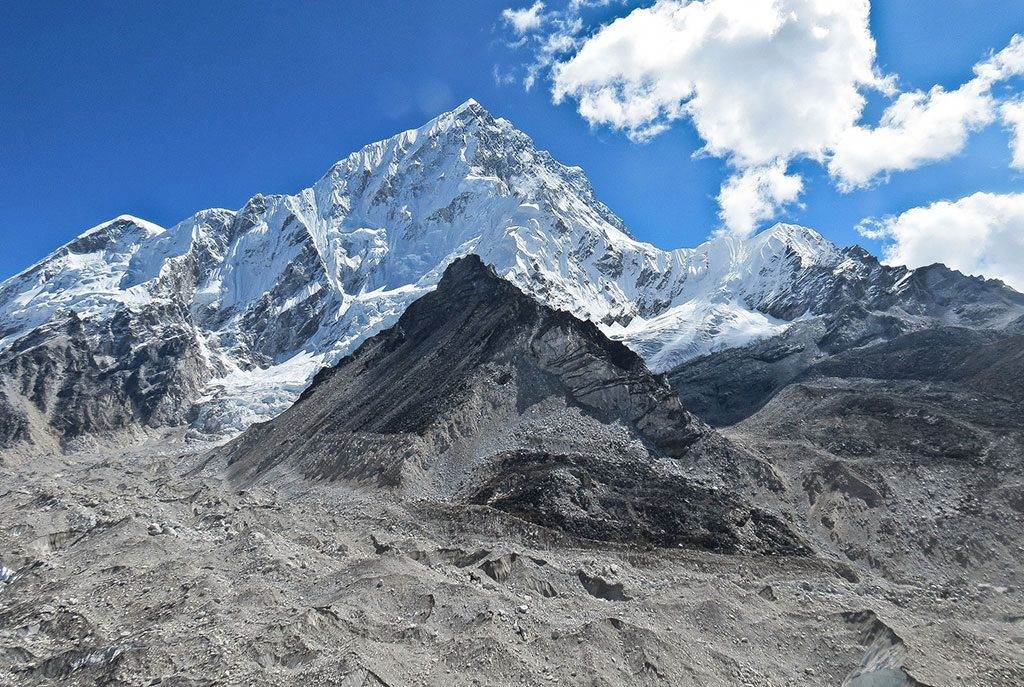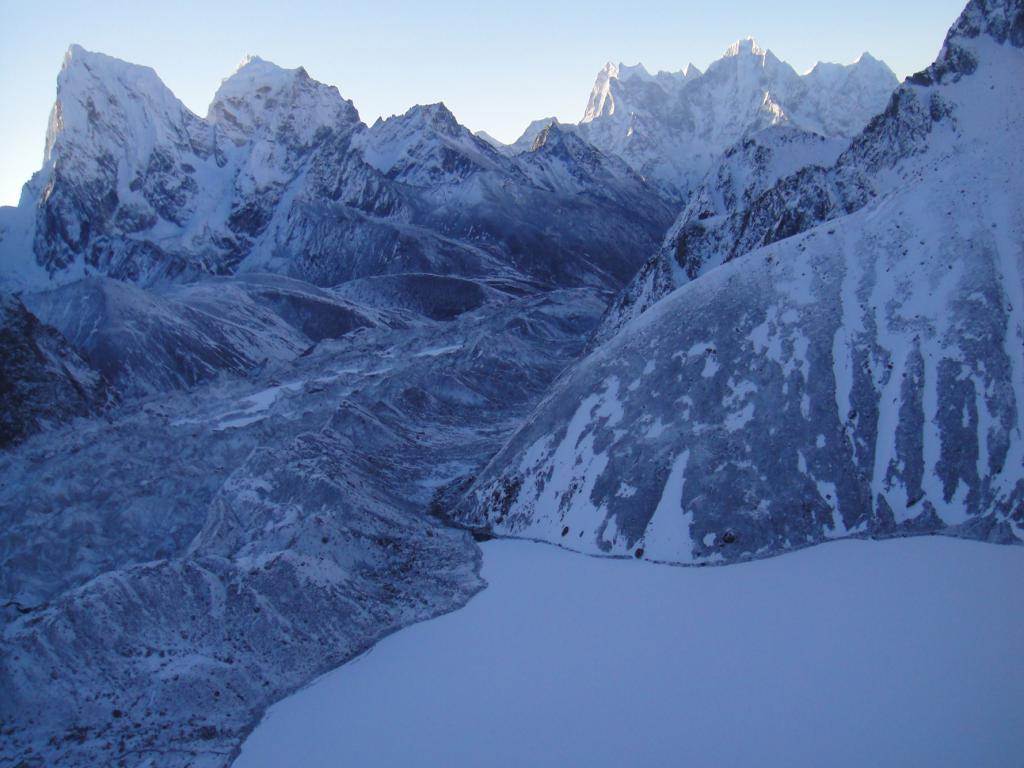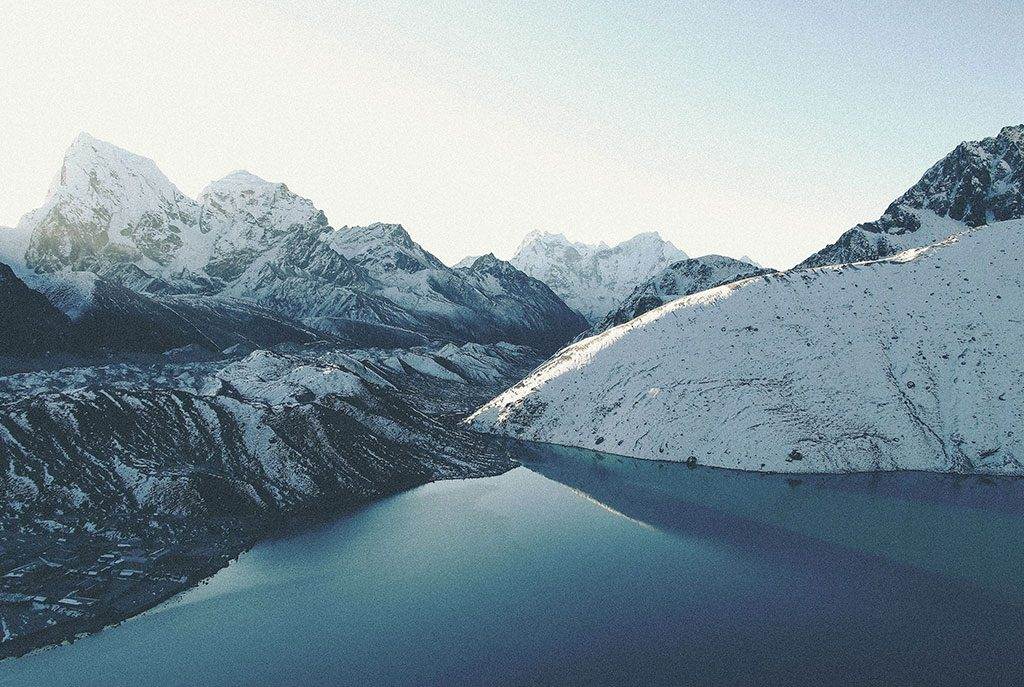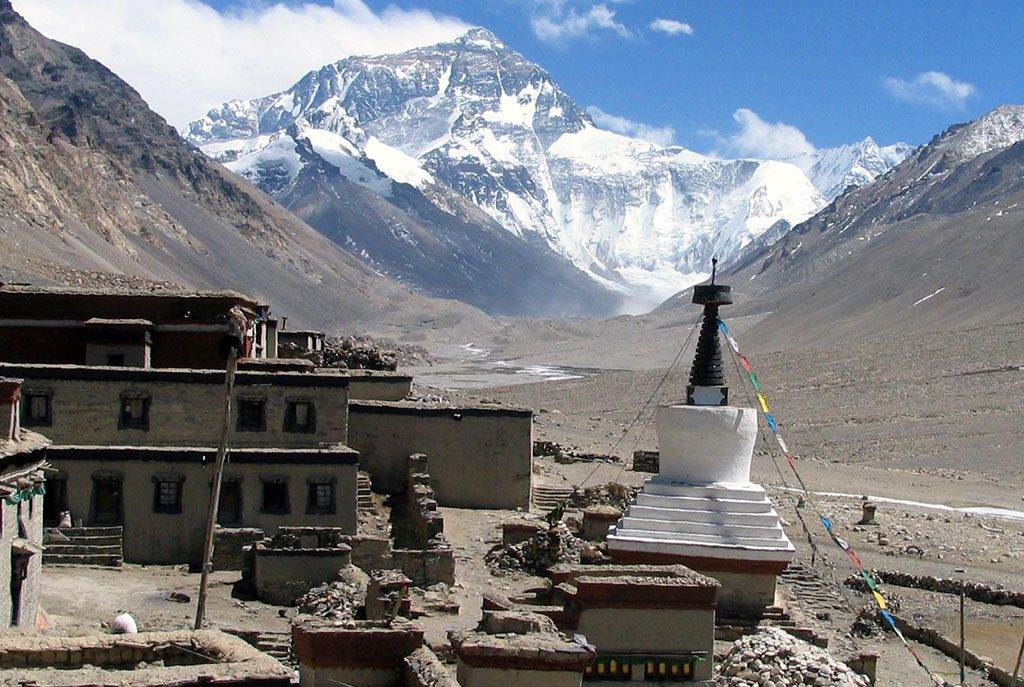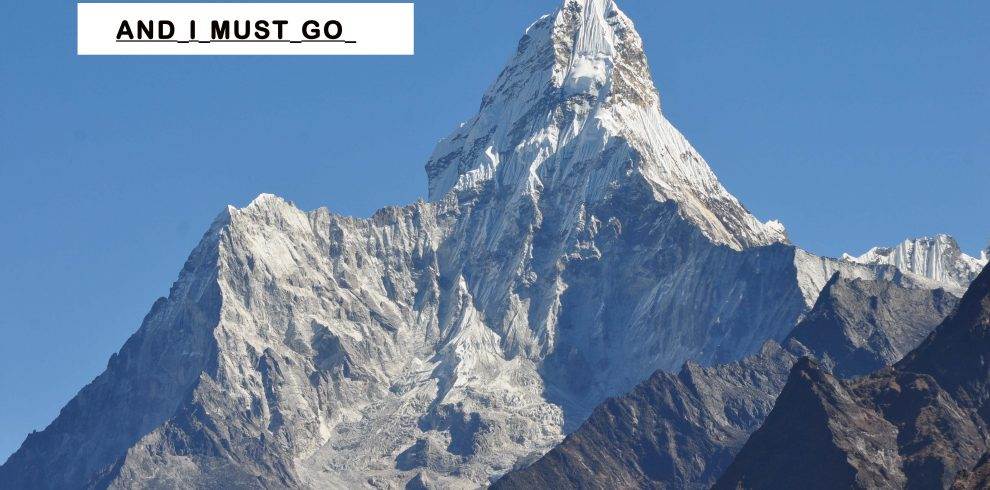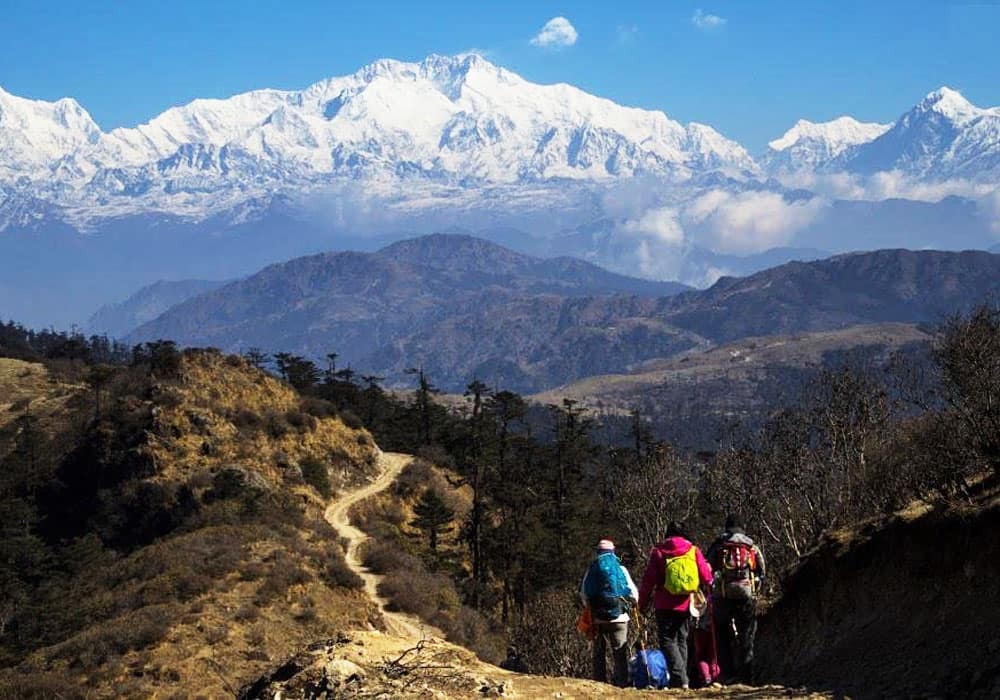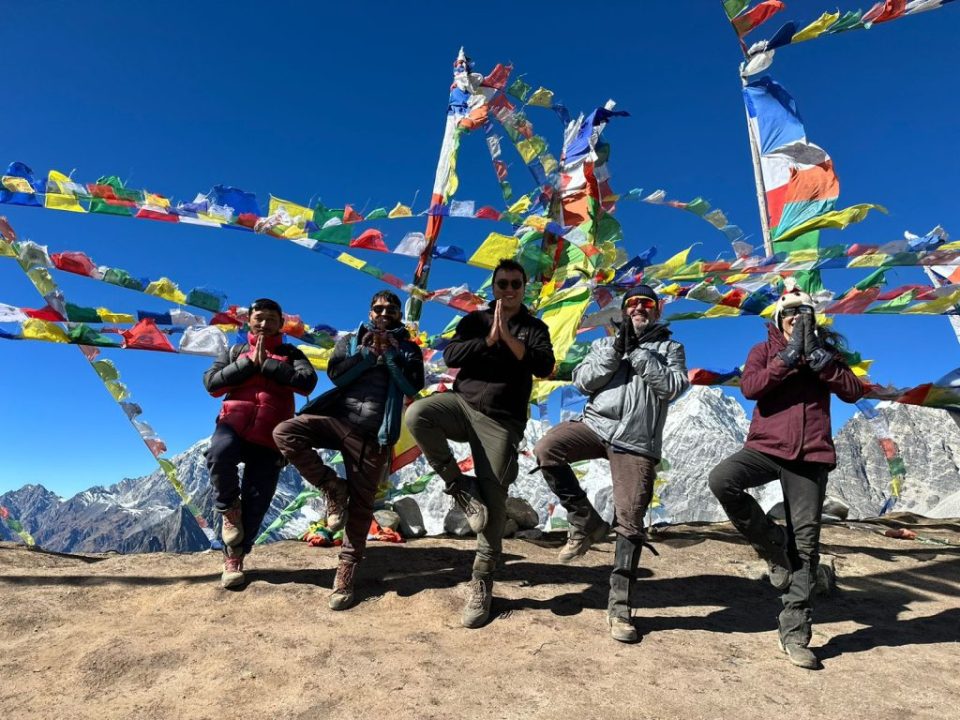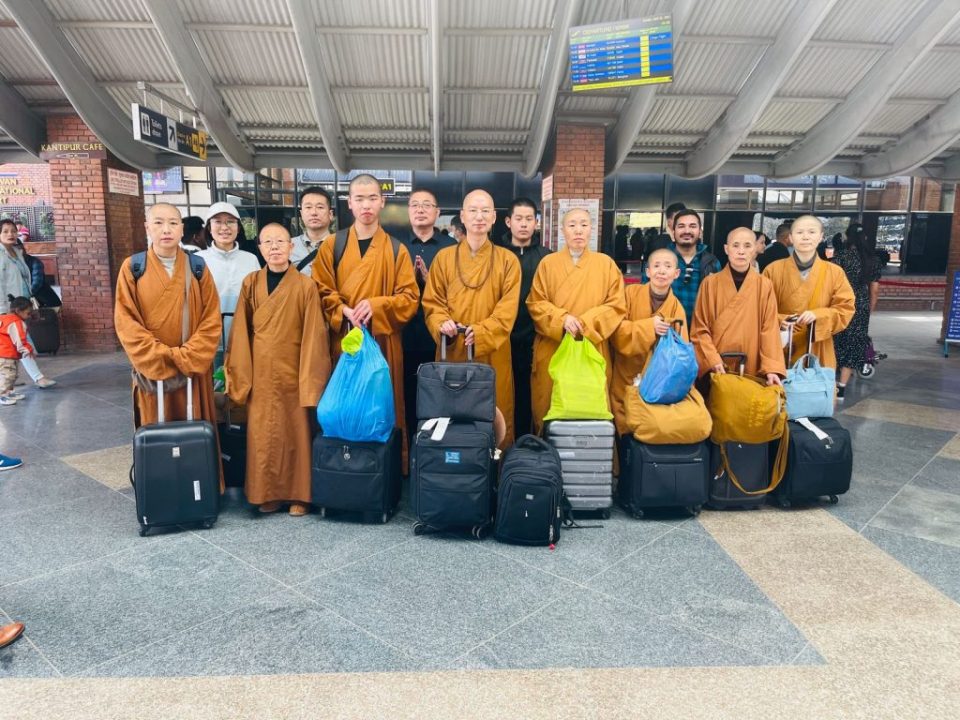Gokyo Chola Pass Everest Base Camp
Trip Introduction
The Gokyo Cho La Pass Everest Base Camp Trek is more technically challenging than some of the other treks in the region, making it more exciting. As a result, this is one of Everest Base Camp Trekking’s more demanding treks, but it’s also one of the most fulfilling. It is the trek to base camp of highest mountain of world and trek to highest freshwater lake system in the world. As you go up the trail and take in some of the Himalayan views, you realize why. This trek takes you through Rhododendron and Pine trees, a waterfall, high ranges, and prayer flags flowing in the wind. The trek to Gokyo Lake should be done with good company. This is Nepal’s most popular trek, with spectacular views of the country’s glaciers. Trekkers can get out up face to face with Ngozumpa glacier, the greatest icefall in the Everest region, by trekking to Gokyo Lake.
The walk includes highland monasteries such as Tengboche on the way back. The gorgeous view of long mani-walls with sacred Buddhist prayers written on stone can be enjoyed throughout the trip. The Gokyo Chola pass trip will take you past lovely, settled Sherpa towns, deep valleys, and the Himalayan River, allowing you to enjoy world-renowned Sherpa culture, friendly people, and kind hospitality. To cross Cho La Pass, you must be mentally prepared, as it requires a 6-hrs active trek and strong physical fitness to adjust to the high altitude. The Gokyo Chola pass allows you to visit the Khumbu valley and the area surrounding Gokyo Lakes.
After a breathtaking flight to Lukla, the Gokyo Chola pass trek begins. The trail to Gokyo Valley travels past traditional Sherpa communities and the rich flora of Sagarmatha National Park, which is located on the highland Khumbu Region near Everest’s base. Gokyo Valley’s bird eye view, Gokyo lakes, Mt. Cho Oyu, Mt. Everest, Lhotse, and Mt. Amadablam can all be seen from Gokyo Valley. This trek has its difficulties, such as long walking days, but the rewards more than repay in terms of personal success and a one-of-a-kind album of beautiful pictures.
Trip Facts
| Country | Nepal
|
| Duration | 17 Days
|
| Grade | Challenging |
| Meals | 15 dinners, 15 breakfast, 13 lunch
|
| Activity | Trekking and Hiking |
| Maximum Altitude | 5643m/ 18513ft
|
| Accommodation | Hotel, Lodge and Tea house
|
| Best season | Mar, Apr, May, Sept, Oct, Dec
|
| Attraction | Gokyo lakes, Khumbu icefall, Cholachen lake, Cho La Pass, Ngozumpa glacier, Everest Base camp, Tengboche monastery, Namche Bazzar. |
Trip Highlights
- Beautiful view flight to highest altitude airport- Tenzing Hillary Airport, Lukla.
- Incredible views of Mt. Everest, Mt. Lhotse, Mt. Cho Oyu, Mt. Makalu and Gokyo lake along with Gokyo valley from Gokyo Ri, a well-known viewpoint offering a unique view of the mountain’s cape and Gokyo valley.
- Explore the sparkling sights of Gokyo Valley’s.
- Enjoy the breathtaking view of the Khumbu icefall and the longest glacier in great Himalayan; Ngozumpa Glacier.
- The frozen Cholachen lake in the shade of Mt. Taboche.
- While crossing the sensation Cho La Pass, a lovely experience going along off-the-beaten-path trails full of beautiful greenery.
- Beautiful Himalayan views and experience Sherpa culture,
- From Kala Patthar, enjoy the sunrise and get lost in the panoramic views of Everest, Lhotse, and Nuptse.
- Visit the world famous Tengboche Buddhist monastery known as Dawa Choling Gompa.
- Closest view of Mt. Everest from Everest base camp,
- Visit Capital of Sherpa- Namcha Bazzar.
- Enjoy the Everest region’s rich flora and fauna,
- Chortens, prayers wheels, Mani stone, suspension bridge throughout the trek,
Is this trek appropriate for you?
- The trek between Gokyo and Chola is a challenging route. You may easily do this walk if you are physically and mentally prepared, fit, and ready to undertake it.
- It takes 14 days to complete the trek. A maximum of 8 hours and a minimum of 3 hours is spent walking on the trail. You’ll spend about 5-6 hours every day on the path on average.
- It’s a long trip to Gokyo Ri and Chola Pass, though some of the hills can be difficult to cross and look never-ending at times.
- The walk is not difficult in any manner; there is no climbing or even ascending, but it is rocky and hilly, ending on a moraine before reaching the glacier itself.
- Due to the weather and remoteness of this trek and dealing with the high altitude, it is necessary to take it slowly and stay hydrated.
Itinerary
| Days | Activities | Duration |
| 1. | Arrival at TIA Kathmandu (1,350m/4,429ft) | |
| 2. | Fly to Lukla and trek to Phakding (2,800m/9,187ft) | 3-4 hrs. |
| 3. | Trek from Phakding to Namche Bazaar (3,440m/11,290ft) | 5-6 hrs. |
| 4. | Acclimatization day at Namche Bazaar (3,440m/11,290ft) | |
| 5. | Trek from Namche Bazaar to Phortse Tenga (3,680m/12,074ft) | 4-5 hrs |
| 6. | Trek from Phortse Tenga to Machhermo (4,470m/14,666ft) | 5-6 hrs |
| 7. | Trek from Machhermo to Gokyo (4,750m/15,583ft) | 4-5 hrs |
| 8. | Trek to Gokyo Ri (5357m/ 17575ft) and back to Gokyo and Trek to Thangnak (4700m/ 15400ft) | 6-7 hrs |
| 9. | Trek from Thagnak to Cho La Pass(5420m/17,782ft) to Dzongla (4830m/15,846ft) | 7-8 hrs |
| 10. | Trek from Dzongla to Lobuche (4,940m/16,208ft) | 3-4 hrs |
| 11. | Trek from Lobuche to Gorakshep (5164m/16942ft), visit Everest Base Camp (5,364m/17,599ft) | 5-6 hrs |
| 12. | Trek from Gorakshep to Kala Patthar (5550m/18,205ft) to Pheriche (4371m/14340ft) | 7-8 hrs |
| 13. | Trek from Pheriche to Namche Bazaar (3,440m/11,290ft) | 6-7 hrs |
| 14. | Trek from Namche Bazaar to Lukla (2835m/ 9301ft) | 5-6 hrs |
| 15. | Fly to Kathmandu (1,350m/4,429ft) | 30min |
| 16. | Final Departure |
Itinerary
Departure from : Kathmandu, Nepal
Arrival On : Kathmandu, Nepal
Day 1
Arrival at TIA Kathmandu
When you arrive at TIA Kathmandu, you’ll be greeted by a friendly face. Our representative will meet you at the airport and bring you to the hotel. Make your way to the hotel and check-in. In the evening, our guide will meet you and give you a quick outline of the journey. Staying at the hotel for dinner and the night
Day 2
Fly to Lukla and Trek to Phakding
After having a fulfilling breakfast, we will head to airport for the flight to Lukla, the starting point for the Everest trip. Early in the morning, we arrive at the Tenzing Hillary airport, Lukla after a 30-minute flight with a wonderful view of Nepal’s central hills and mountains. On arrival at Lukla, we’ll meet up with the rest of our trekking group and begin our day’s journey to Phakding through Chaurikharka village. Phakding is a little settlement of Sherpa on the banks of the gorgeous Dudh Koshi River. We will trek through the beautiful Khumbu valley crossing the suspension bridge. We’ll arrive Phakding after a three to four-hour trek on a steep downhill trail. Dinner and overnight stay at a nearby lodge.
Day 3
Trek from Phakding to Namche Bazaar
After enjoying breakfast, we will check-in at the desk and head uphill into the Sagarmatha National Park. The Park plays an important role in preserving ecological diversity as well as unusual flora and wildlife. When we arrive at Jorsalle checkpoint we get our Sagarmatha National Park Permit. Climbing through the forest we’ll cross many high suspensions bridge over the Dudh Koshi rivers i.e., is Hillary Suspension bridge in Larcha dovan. We gradually ascend to Namche Bazaar, the hub of the Khumbu region known for the Sherpa’s capital. The breathtaking views of Everest, Ama Dablam, and Kongde Ri put joy on your face. Dinner and overnight stay at a nearby lodge.
Day 4
Acclimatization Day at Namche Bazaar
We’ll rest at Namche Bazaar today to help our bodies adjust to the altitude and avoid altitude sickness on our next trek, as we’ll be moving to a higher altitude the next day. In the morning, have breakfast and wander the Namche Bazaar. Today’s interesting point of view is learning more about this fascinating mountain marketplace. We set out on an acclimatization hike around Namche Bazaar, to Namche Peak, and to the Sherpa Museum. As we trek up the Syangboche Airport, take out your cameras to capture the amazing views of the AmaDablam, Tawoche, Everest, Kantega, Thamserku, and the surrounding peaks. Hike up to the highest altitude hotel of world- Everest view hotel for the amazing view of Mt. Everest and other mountains. Explore around the café and restaurants, gear shops in Namche.
Dinner and overnight stay at the lodge.
Day 5
Trek from Namche Bazaar to Phortse Tenga
After having breakfast, we will depart for Phortse Tenga. Phortse Tenga is a typical Sherpa settlement in the Khumbu region that is less well-known due to its location off the main base camp trail. We’ll walk for about 5-6 hours today. We climb rapidly up through the lush forest of rhododendron, pine, birch, and juniper woodland on the eastern side of the hill. We arrive at the Phortse Tenga after passing through different cattle grazing areas and small Sherpa villages. Tawoche summit provides a spectacular view. Overnight stay in a nearby hotel.
Day 6
Trek from Phortse Tenga to Machhermo
After having breakfast, the trek begins with a gradual climb to the beautiful summit. We are attracted to Luza by the panoramic sights of Kangtega and Thamserku. From this day you will get to see the fifth tallest mountain- Mt. Cho Oyu. We will walk for about 5-6 hours, then we head east to Machhermo, a village near the confluence of glacier streams, on the hillside above the river. Here, a Himalayan rescue hospital with basic treatment facilities has been created. Dinner and overnight stay at a nearby lodge.
Day 7
Trek from Machhermo to Gokyo
We will depart from Machhermo early in the morning after enjoying breakfast towards Gokyo. Starting with a short climb through a ridge Chorten, the views of the lovely mountains and down the valley are both breathtaking. Then we arrive in Pangka. We reach the riverbed by following the trail and gradually ascend through the Ngozumpa glacier’s moraine. The hike will take approximately 5 to 6 hours. We cross the first lake, Longbango cho, then Taboche Tso, and finally the third, a sparkling blue lake Gokyo Cho, in just opposite of the Gokyo valley. Gokyo Cho is also called “Dudh Pokhari” which is the main lake of Gokyo Lakes. Dinner and Staying at a local lodge for the night.
Day 8
Trek to Gokyo RI and back to Gokyo and trek to Thangnak
Early in the morning, we trek up the difficult rocky trail to the Gokyo RI. Gokyo RI offers breathtaking views of the Everest region’s White Mountains, including Mt. Everest, Makalu, Cho Oyu, Lhotse, and nearby peaks. The Ngozumba glacier surrounds the Khumbu glacier in a long line. The Gokyo Lakes and Gokyo valleys can be seen plainly from this viewpoint. The hike takes around 3-4 hours and is also an acclimatization hike so that we can have a better adventure via the Cho La’s challenging high pass. Then we make our way down to the Gokyo valley. After breakfast, we continue our way, taking in the breathtaking views of Kusum Kanguru, Thamserku, Kangtega, Makalu, Lhotse, Nuptse, and other peaks. We will walk pass the longest glacier of Himalayas- Ngozumpa Glacier. It takes 2-3hrs to reach Thangnak from Gokyo valley. Dinner and overnight stay at a nearby lodge.
Day 9
Trek from Thagnak to ChoLa Pass to Dzongla
We begin our walk early in the morning, before the sun rises, as we will be crossing the Chola pass today. As the pass in high altitude gets windy in the afternoon. It’s a long, incredible trek up the rocky trail. At 5300 meters, Cho La Pass provides another excellent view of Everest and other high Himalayan peak. Then there’s the steep descent trail, which we’ll have to handle with care. We have to wear ice crampon to cross this icy Chola pass. After the challenging climb of Chola pass we will reach Dzongla. Dzongla is the small village between Cho la pass and Lobuche. Today we should hike for about 7 to 8 hours. Dinner and overnight stay at a nearby lodge.
Day 10
Trek from Dzongla to Lobuche
We have an easy day planned with a short walk after a wonderful breakfast. We continue walking after over a challenging Everest high pass and taking in the glacier views. We go through the grassy trail after crossing the bridge. The views of Mt. Aama Dablam, Thamserku, Kangtega, and Tawoche inspire us to keep moving forward. Today we will walk for about 3-4 hours. We slowly make our way to Lobuche. Dinner and overnight stay at a nearby lodge.
Day 11
Trek from Lobuche to Gorakshep, Hike to Everest Base Camp and back to Gorakshep
After having breakfast. Today, we walk from Lobuche to Gorakshep. The trail climbs and descends through the mountains and ice glaciers. When we arrive in Gorakshep, we have lunch at the tea house where we will spend the night. After lunch, we will hike to the base camp of the world’s highest peak Chomolungma popularly known as Mt. Everest. It is about 2.5-3.5hrs of an easy hike to EBC. You will get to see the huge, tallest mountain in the world, Mt. Everest and Khumbu icefall right in front of your eye, and this feeling will be your once-in-a-lifetime best moment. After spending some time in EBC and clicking some photos we will return to Gorakshep. Dinner and overnight at Gorakshep.
Day 12
: Hike from Gorak Shep to Kala Patthar and Trek back to Pheriche
Early morning, we go on a hike to Kalapatthar, a black rock- looks like a black diamond peering over the shoulder of another mountain. Mt. Everest, Lhotse face, Nuptse, AmaDablam, Taboche, Cholatse, Lobuche East, and Pumori are among the massive Everest region peaks that arise at some point throughout the walk. You’ll be amazed by the golden sunrise over the white peaks, which make the mountain seen golden as recorded in pictures. The Khumbu glacier is seen down in a curving manner, and the walk takes about 5 to 6 hours. Then we head down to Gorakshep for breakfast. After breakfast we’ll head towards Thugla. We reach Thugla and cross the stream by following the downhill route. We take the right trail, avoiding the Dingboche trail. There is a health center in Pheriche. Dinner and overnight stay at a nearby lodge.
Day 13
Trek from Pheriche to Namche Bazzar
After breakfast, the amazing Everest beauty surrounds us as we begin our trip. Kangtega and Thamserku, as well as the Khumbu La and Kongde RI, are all just above us. Today, you’ll cross the Imja Khola before traveling to Namche Bazzar. We’ll have a short visit at Tengboche Monastery on the way to Namche Bazaar. The trek takes about 6 to 7 hours and provides us with breathtaking sights and an unforgettable cultural experience. Dinner and overnight stay at a nearby lodge.
Day 14
Trek from Namache Bazzar to Lukla
After having breakfast, we will leave for Lukla. Today will be the last day of our round trek. While passing through the gate of Namche, leaving the Namche Bazaar behind, you might feel some emptiness in your heart. We ultimately reach Lukla after traveling past Monjo and Phakding and several other gorgeous sites, tracing the trail down to the Dudh Koshi River and walking alongside it. Today’s trek will last approximately 5-6 hours. We will rest for the day after we arrive in Lukla. Dinner and overnight stay at a nearby lodge.
Day 15
Fly to Kathmandu
We fly back to Kathmandu in a fixed-winged aircraft on another gorgeous morning journey. It’s difficult to say a sincere goodbye to the gorgeous mountains and travel mate after so many days of wonderful times among them, but we must. After so many days of amazing and fresh mountain air, we finally arrive at Kathmandu airport to breathe the city air. You’ll be taken to our hotel and left to enjoy and rest on our own. Kathmandu offer you a lot of places to visit and lots of activities to do. You can stroll around the antique shops of Thamel or go for clubbing with your friends as it is your last day at Nepal. You’ll have a farewell dinner at cultural restaurant with our staffs. Spend the night in a hotel.
Day 16
Final Departure
Our agent will drive you to the international airport of Kathmandu 3 hours earlier than your flight time, as per your travel itinerary, and your tour will end here.
Route Map
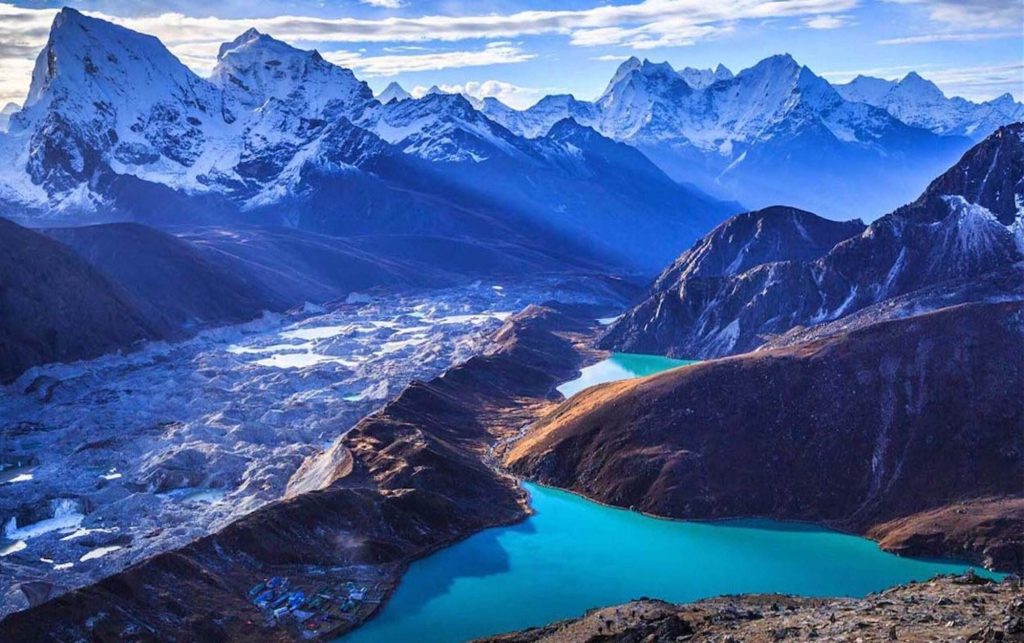
Altitude Map
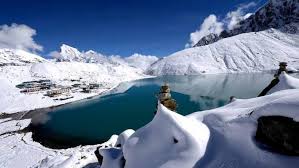
What's Included
- Arrival & Departure: Airport – Hotel transfer – Airport (Pick Up and Drop).
- Hotel Accommodation in Kathmandu: 2nights at Star categories hotel on twin sharing on bed and breakfast basis.
- Welcome Dinner and farewell dinner at Nepali culture restaurant in Kathmandu with Office’s Staffs.
- All government and local taxes if necessary.
- Permits: All necessary paper works: Sagarmatha National Park permit & Khumbu Rural Municipality entry fee.
- Insurance: Insurance for all involved Nepalese staffs during the trek.
- Trekking Map: Everest Region Trekking map.
- Member transportation: – Air Transportation: (Domestic Flight) Fly from Kathmandu – Lukla and while returning Lukla.
- Food & Lodging: 3 meals a day (Breakfast, Lunch, Dinner) along with accessible accommodation twin sharing at Hotel/Lodge/teahouse during the trek.
- Drinking water: 2 liters boiled water to carry on thermos per day per member.
- Guide: Government licensed Guide (English speaking) during the trek
- Porter: Porters (2 trekkers: 1 porter) up to 15kg during the trek.
- Comprehensive Medical kit.
What's Not Included
- Air Fare: International flight airfare (from and to Kathmandu).
- Nepal entry Visa fee.
- Extra night in Kathmandu: Extra nights’ expenses in Kathmandu. In case of early arrival or late departure, early return from Trekking (due to any reason) than the scheduled itinerary.
- Insurance: Travel and high-altitude insurance. *Mandatory
- Rescue Evacuation: Medical and emergency rescue evacuation cost if required. (Rescue, Repatriation, Helicopter, Medication, Medical Tests and Hospitalization costs).
- Personal Expenses: Telephone calls, Internet, Toiletries, battery recharge, hot shower, laundry, soft drinks, beer and any alcoholic beverages.
- Personal Equipment: Clothing, Packing Items or Bags, Personal Medical Kit, Personal Trekking equipment.
- $ USD for extra per porter per day (If extra porter demanded).
Equipment List
What to bring ?
General
Tailor Your Holiday
Everyone has their own preferences in terms of destination, journey time, and budget. As a result, sticking to our plan isn't necessary. We will create a personalized itinerary for you that includes accommodations, transportation, meals, and tour guides. We guarantee you the best Tailor-made Package because this is your trip. You have the option to personalize it, as your liking. Let us Plan together to make your Vacation worth it.
Fixed Departure
Why Travel With Us?
Secure Online Payment, No Credit Card Fee
Travel with Locals. Support Locals
Lifetime Deposit
Private & Tailor-Made Trips
24/7 International Support
Support Local Communities & Donate to Charity
All Inclusive Price
Secure Online Payment, No Credit Card Fee
The ideal season to travel
January:
It is possible to trek to Gokyo and Chola Pass in January because there isn’t always much snow, but the weather will be freezing. Even in January, the Everest region has a comfortable daytime temperature of 8-12 degrees Celsius. The temperatures are also not especially cold at night.
February and March:
In February and early March, Nepal’s off-season for trekking continues, with low temperatures and fewer visitors around the nation. Although the weather in February and early March is cold, especially at night, the spectacular views and empty routes make this a desirable season to trek if you are well prepared.
March and April:
Late March and April are popular trekking months, with the weather warming up and crimson rhododendrons blooming lower down the trails. In late March and early April, when the temperatures are still cooler, the weather in the Everest region is ideal for trekking. On the EBC trails, this is the busiest month of the year. Although the skies aren’t as clear as they are in the winter in March and April. As Everest region is the region of Buddhist culture, you can get to see Buddha Jayanti celebration in the monasteries, that falls on the end of April.
Early May:
Trekking to EBC in early May is still doable before the monsoon arrives because it is the transition period between the two seasons spring and summer. Light showers are more likely at higher elevations, and you may need to plan ahead for unexpected weather changes.
Late May, June, July, August, and early September:
During the rainy season, which lasts from late May to early September, it rains every day, making routes muddy with leeches and mountains high with clouds, resulting in landslides. During May -July you can see red, blue, purple, and yellow rhododendrons beyond the trek from Namche. For nature lover, May and June is the best time to trek. Although September isn’t as wet as July or August, rain should still be expected. September is a pleasant month to visit, with temperatures falling below freezing only at higher altitudes and at night. The most important festival of Sherpas, “Dumji festival” falls during the end of June or early July.
Late September to early November:
While September marks the start of Nepal’s busy autumn season, routes do not become very crowded until October. While October is the busiest trekking month in Nepal, November is a close second, with conditions that are even better. This time of year, especially from October to early November, is marked by clear skies and fresh air, making it ideal for trekking. Although the weather is cooler presently than it was in the spring, the days are still dry, and the sights are breathtaking. In late Oct or early Nov full-moon, people in Everest region celebrate the famous 19 day long colorful festival “Mani Rimdu” in Tengboche Monastery, but the last 3 days of this festival is only open for public. Do the booking of flight and lodges in advance if you are planning to participate in this festival.
Late November to December:
November is the driest month of the year. Except for the most courageous trekkers, the trekking trails become vacant as winter approaches. Late November to December is also a great time to go
trekking, although the weather will be chilly, with temperatures dropping well below zero at night. If you’ll prepared for harsh cold, December is an excellent time to hike in the Everest region.
Flight to Lukla
Almost every trip to Everest region begins with a flight from Kathmandu to Tenzing Hillary Airport in Lukla, a small single-landing runway airport high in the Himalayas. It is the easiest way for the Gokyo Chola pass Everest base camp trek.
Lukla Airport is also known as the most dangerous airport in the world. This airport, which is only open when the weather is calm, and visibility is excellent.
- The Flight from Kathmnadu to Lukla is about 30 min and flight from Manthali to Lukla in about 20-25 min. Flight from Kathmanu to Lukla through helicopter is about 45 min.
- Flight to Lukla is operated by Tara Airlines, Sita Airlines and Summit Airlines.
- It’s impossible to say whether your Lukla flight will be canceled. If this occurs, your trip may be extended by one or two days. So, plan ahead and save buffer days in your itinerary to ensure you don’t miss your international flight back.
- Flights to and from Lukla are currently operated from Manthali Airport in Ramechhap rush hours at Kathmandu Airport during the high season (spring and autumn). Kathmandu is 138 kilometers (4 hours and 30 minutes) away.
- Helicopters have a little more flexibility when it comes to arriving at Lukla, as it can frequently make the flight in poor visibility weather. It is sometimes ok to switch your flight to a helicopter, but this can be expensive and there is no guarantee that you will arrive on time.
Altitude sickness
Altitude sickness is a sneaky monster that may attack even the fittest trekkers. These demands doing everything in your power to prepare for altitude trekking and taking things carefully throughout your Everest region journey. With increasing altitude, the amount of available oxygen decreases, which is the primary cause of high-altitude sickness. Gokyo and Chola Pass are located at an elevation of over 5000 meters above sea level, where the atmosphere is depleted of oxygen, air get thin, that makes difficulty in breathing.
The Gokyo Lakes Trip is a high-altitude trek that needs proper acclimatization. Your body requires time to adjust to thin air, so start at a lower altitude and work your way up. Some of the symptoms of Altitude sickness are:
- Increased breathing.
- Increased urination.
- Restless sleep.
- Periodic breathing at night because of altitude.
- Dehydration.
- Shortness of breath.
- Extreme fatigue.
- Respiratory failure.
- Cerebral edema.
- Coma
Certain care should be made to ensure that the situation does not worsen. However, if the symptoms worsen, you may need to return to a lower height and seek medical help. There are, however, a number of other precautions you may take while trekking in the Everest region to lessen your risk of altitude sickness.
- Trekkers can modify their bodies by slowly and gradually climbing, as our bodies require time to adjust to the oxygen level. At least one day of acclimatization rest is required for high altitude trekking, and you should go as high as possible before returning to a lower height for the night.
- You should do various strength training exercises such as running, cycling, jogging, push-ups and going to the gym to acquire strength and stamina for your adventure.
- As the air gets increasingly thin, an increase in elevation reduces oxygen levels, and in the Everest region trek, an increase in altitude also means less vegetation. The consumption of alcoholic beverages, cigarettes, and tobacco decreases the body’s water content.
- The greatest remedy is to always stay hydrated. On your walk, instead of drinking cooled water, drink warm water.
- Diamox is the most effective altitude sickness medication; thus, you should bring a subscription with you on the trek. However, you should consult with your physician to see whether it is advantageous.
- Avoid sleeping pills to treat insomnia because they suppress breathing,
- If symptoms get worsen, do not travel any higher and consider descending to a lower altitude (approximately 300-600m). But if descent is not possible, a portable hyperbaric chamber (Gamow bag) can be used to stimulate a lower altitude.
Things to known before travelling to Everest region
Drinking-Water
Especially for trekkers, it is very necessary to hydrate your body at a higher altitude than in lower elevations to avoid dehydration and altitude sickness. Lack of fluid can be the main hindrance during the trek. You should hydrate your body with at least 3-4 liters of water on a daily basis (Tea, soup, or normal drinking water). Throughout the trek, you will come across tap and spring water, but it is not safe to drink without purifying it. You can buy the plastic bottle water in the teahouses but get expensive as you climb in the higher altitude, and it causes pollutes the local ecosystem, therefore we recommend you to use a Reusable water bottle or water pouch favorable for both hot and cold water.
During this trek you may have to pay from 1$ to 5$ (at Gorakshep) for a sealed bottle of water. Here are some ways that you can use to make the water drinkable.
- Boiled water
Boiling water is the best way to purify the water. As we are climbing to a higher altitude you need to boil the water for about 3-minute and season it with a pinch of salt before drinking. You can get free cold water in the teahouse but for boiled water, it cost around 1-2$ per liter and 3$- 10$ for large pot.
- Purification tablets or electrolyte powder.
Purification tablets like chlorine or iodine tablets are commonly used tablets by trekkers to disinfect the water. 1 tablet is enough for a liter of water. It takes around 30 min for the tablets to dissolve and become drinkable. Water purify by tablets may leave a taste in your mouth.
Electrolyte powder is another option. Electrolyte powder is a better way to purify water than tablets because electrolyte powder contains minerals such as salt, Potassium, Magnesium, which are important for your body during the trek.
- UV Light water purifier/ SteriPEN.
It is a simple, effective, economic and environment-friendly way to purify water. It kills the bacteria and virus within 10 sec by exposing them to ultraviolent light using Steripen, without changing the flavor of water. This is the highly recommended method of purifying water.
Electricity and Internet facility at Gokyo Chola pass Trek.
Electricity facility.
Despite the challenging geography and weather conditions, the Everest region has been able to provide electricity and access to the Internet.
The lower part of the Everest region (Lukla, Phakding, Namche) is hydroelectrically powered, thus you can enjoy free electricity and internet service but as you climb up to the higher part (Dingboche, Gorak shep, Kalapatthar, Everest base camp, Pheriche) of Everest Region, they rely on solar power electricity so there will be no charging socket in your room. There is a commonplace for charging usually in dining area, and you will be charged extra from the use of electricity on different bases and voltage of your device.
Charging a mobile phone cost 1.5$- 5$ per hour (from Dingboche onward)
Internet Facility and Service
Internet and network facility is needed to contact your family, friends, employee, to post updates and upload photos during the trek.
Everest link has been providing an internet facility throughout the Everest region.
You can purchase an Everest Link WI-FI card at the lodges and use the Everest Link hotspots to connect to the internet anywhere on the path within Everest Region.
Cost of Everest Link WI-FI card:
-10GB= NRP 2000/ 17$
-20GB= NRP 3000/ 25$
(Valid for 30 days)
NCell and NTC cellular service has also been providing the network and internet facilities in Everest Region. You can buy the NCell or NTC sim card from the stores either in Kathmandu for 1$ or in Lukla and Namche Bazaar for 3$-4$. By taking data packages you can use the internet from NCell and NTC up to Tengboche. NTC network service is also available in Gorak shep.
NTC cellular service is most preferred over NCell. NTC provides good service and signal connectivity, comparison to NCell.
| Buy NTC data package
Dial*1415# |
Cost of data package in NTC:
-14GB=7$ (Valid up to 28days -30GB=15$ (Valid up to 90 days)
|
Check balance
Dial*1415#
|
| Buy NCell data package
Dial *17123# and select.
|
Cost of data package in NCell:
-15GB=10$ -25GB= 12$ (Valid up to 30 days)
|
Check balance
Dial *101#
|
Document needed to buy a sim card.
For foreigner = 1 passport size photo, Passport photocopy, or valid identity card.
For Nepali = 1 Passport size Photo, Photocopy of Citizenship.
Some useful tips to reduce the use of electricity.
- Extra batteries for the camera.
- Power bank with 5000-10000mAh.
- The solar charger and solar lamp (LuminAID Lamp).
- As possible less usage of a device with low brightness, GPS, and WI-FI off.
Essential Backpack items for Gokyo Chola Pass EBC Trek
The bag of a trekker also reveals the trekker’s level of experience. A good trekker should be a smart backpacker. You should be pre-prepared for the things that you need in the trek.
Here are some of the things that you need to take with you for the trek.
Travel documents
- Airline tickets with the itinerary.
- Travel insurance policy documents.
- Valid passport.
- Copies of passport.
- Passport-sized photos.
- Nepalese cash.
- Travel permits.
Clothing
- A pair of waterproof trekking shoes or hiking boots.
- A pair of flip flop slippers or running shoes.
- 2 sets of thermals (leggings and tops)
- 5-6 pairs of hiking long sleeve shirts or tops.
- 3 pairs of hiking shorts and pants.
- 3 fleece jumpers or a set of tracksuits.
- Good quality windproof down jacket.
- Lightweight waterproof rain jacket and pants.
- Neck gaiter, leg warmer, and packet of pocket hand warmers.
- 4-5 pairs of quick-dry socks, underwear, sports bra.
- Pair of inner and outer gloves.
- Knitted Hat, sun cap, beanie, or bandana.
- Glacier Sunglasses and eyeshade.
Trekking equipment
- Waterproof trekking bag of 30-40liter and Rucksack of duffel bag (if your backpack is not enough for all your item and need a potter).
- Reusable water bottle (both hot and cold) of at least 1-2litre.
- A sleeping bag and sleeping bag liner.
- Trekking stick/ poles.
- Pair of ice traction (crampon).
- LED Headtorch or solar lamp (Luminaid lamp).
- Stuff sacks, plastic bags.
- Plug adapter, Charging appliances, power bank, batteries.
- Pocket knife.
- Travel Wallet.
Toiletries
- Rolls of Toilet paper, wet wipes, and tissue.
- Medium-sized quick-drying towel.
- Toothbrush and toothpaste.
- Hand sanitizer.
- Sunscreen, lip balm, body lotions.
- Deodorants.
- Portable mirror.
- Shampoo and soap.
Personal First Aid Kit
- Antibiotics.
- Painkillers, Paracetamol, ibuprofen, aspirin, Nicole
- Sanitary pads.
- Bandage.
- Anti-inflammatory spray.
- Anti-Nausea tablets.
- Anti-diarrhea pills or power.
- Altitude sickness tablets.
- Water purifying tablets or electrolyte powder.
- Mosquito and Insect Repellent
- Salt or anti leech oil (If travelling in rainy season, July- Aug)
- Earplugs
You can buy or hire trekking cloths and equipment in Kathmandu. If you are buying it, you have to allow an extra day for shopping; however, if you are hiring it, you must inform us in advance so that we can arrange it before your arrival in Kathmandu. This way you can reduce the weight of your luggage and save time and money.
Branded trekking clothes and equipment are available around Thamel area in a reasonable price.
Note- Kathmandu- Lukla flight has a luggage allowance of 15 – 20 kg per person. For extra baggage, they charge 2$ – 3$ per kg. So, you can wear your trekking boots and jacket to reduce the weight. Have a hand carry bag for your passport, money, medicine, and pair of clothing. You can leave some unnecessary item in hotel at Kathmandu also.
Accommodation, Meal, and Transportation
Accommodation
We will accommodate in star hotel during our stay in Kathmandu. In Lukla, Phakding and Namche Bazaar we will stay in lodges. For the rest of the stop, we stay at teahouses.
Meal
During the trek, we will provide you three-time meals. You can choose from the given menu.
Breakfast– French toast, cornflakes, cereal, pancakes, Bread butter, eggs, oat meal, porridge, tea etc.
Lunch– Dal Bhaat (Rice, vegetable curry, meat curry, Lentils, Tomato Chutney, Salad, Papad) Vegetable noodle soup, Chicken noodles soup, Garlic soup, Fried noodles, Fried rice, Thukpa, Fried potato, Mo: Mo etc.
Dinner– Dal Bhaat (Rice, vegetable curry, meat curry, Lentils, Tomato Chutney, Salad, Papad) Vegetable noodle soup, Chicken noodles soup, Garlic soup, Fried noodles, Fried rice, Thukpa, Fried potato, Mo: Mo etc.
Besides these, there are a variety of other options of food. You can buy from your own pocket.
Transportation
By Bus- From Kathmandu airport to hotel at Kathmandu and vice-versa.
By Air- Flight to Nepal.
Flight from Kathmandu to Lukla and back.
Guide and Staff Arrangements
Throughout the trek, all your activities will be handled by our well-qualified and professional staff. We will do all the escorting. We are providing you a highly experienced and licensed local Sherpa guide with fluent English speaking and has excellent communication skills. We will accompany you from Kathmandu and guide you throughout the trek. Each group of 4-5 trekkers will be assigned an assistant guide, as well as a porter for two trekkers (2*15kg =30kg). If your luggage weight more than 15kg you will be provided a porter individually but you will be charged of 2 people.
All our lead guide, assistant guides, and potters are well professional and experienced. So, we hope for your respect and cooperation with us throughout the trek.
A typical day on the Gokyo Chola Pass EBC Trek
Every day will begin with the ringing of your alarm clock at 6 a.m. and a knock on your door from your guide with the invitation of breakfast. Get up, have breakfast, pack your backpack and get ready to start your day’s walk by 7 a.m. We need to start our trek early to avoid the scorching sun as in midafternoon the wind gets stronger compared to morning in higher altitude.
You’ll wander along trail enjoying the scenery, clicking photos, creating memories, passing by other travelers, interacting with your guide, hearing each other’s stories. Lunch will be served at a local teahouse in the late afternoon (1-2 am). Having lunch and an hour of rest, we will proceed to the day’s final destination as per the itinerary. On arrival at the destination, check into your accommodation. Get freshen up and some rest. As every teahouse where we stay has a large common dining area with a wood- burning stove in the center, there you will get to meet other travelers. You can sit there, laugh at each other stories, play cards, sing songs, play music, and have a good time. This will help you forgot all the tiredness of the day. Later at the evening you will have your dinner together. After dinner, your guide will give some short briefing about next day’s trek regarding when you must get up, when we have to start our trek next day, where we will stay the next day, how many hours we have to walk and so on.
During the acclimatization day, hike around the small peak or viewpoints. At night enjoy the view of sparkling stars floating in the clear sky above the freezing cold wind. The pristine blue and green water of Gokyo lakes, colorful magical sunset and mountains from Gokyo Ri, the reflection of Ama Dablam in Cholachen lake, Sunrises view from Kala Patthar, hike to the Everest Base camp will be your lifetime memory. Every stop might not be iconic but these 17 days trek of Gokyo Chola Pass Everest Base camp will give you unforgettable emotions. Your hard walk will be paid off on reaching the destination with lifelong memories.
Nepal Tourist Visa and permits details
Visa procedure.
To travel Nepal, you’ll need a tourist visa that is valid for the period of your stay in Nepal. Better, if you have a tourist visa valid for at least 2 months because anything can happen during the trip and staying in Nepal after your visa expires would result in you paying a penalty. Apply for a visa at your nearest Embassy of Nepal or obtain an On-Arrival visa at immigration in Tribhuvan International Airport, Kathmandu. But it’s better to contact your nearest Nepalese Embassy.
Here are the documents that you need, to apply for the tourist visa.
- The Tourist Visa Application Form for Nepal (Fully completed online and printed)
- Original Passport with at least 2 blank pages and validity of at least 6 months.
- Photocopies of your passport’s personal information page.
- At least 2 recent passport-sized photos of yourself with white background.
- Proof of accommodation in Nepal.
- Valid travel and return flight tickets.
- A bank statement from the last 3 months with a minimum closing balance of NPR2,00,000.
- Receipt of the visa fee for Nepal.
Note: 15 days visa cost USD 30 but our trip is of 16 days, so apply for 30 days tourist visa that costs USD 50.
Entry permits and Requirements
The Entry permits that you need for the trekking in the Everest region are;
| Trekking permits | Foreign Nationals | SAARC Nationals | Nepali Citizens | |
| 1 | Khumbu Pasang Lhamu Rural Municipality Entrance Permit
|
NPR 2,000 per person (for the first 4 weeks)
NPR 2,500 per person (beyond 4 weeks)
|
NPR 2,000 per person (for the first 4 week)
NPR 2,500 per person (beyond 4 weeks)
|
NPR 2,000 per person (for the first 4 week)
NPR 2,500 per person (beyond 4 weeks)
|
| 2 | Sagarmatha National Park Permit
|
NPR 3,000 per person per entry + 13% vat.
(Approx. 34$)
|
NPR 1,500 per person per entry +13% vat
(Approx. 15$)
|
NPR 1,00 per person per entry +13% vat
(Approx. 1$)
|
Note- A Khumbu Rural Municipality Entrance permit must be obtained from the Rural Municipality desk at the Lukla checkpoint.
Permits for the Sagarmatha National Park can be obtained from the Nepal Tourism Board in Bhirkuti Mandap, Kathmandu and from the Sagarmatha National Park entrance gate at Monjo. To save time, we recommend that you obtain a Sagarmatha National Park Permit in Kathmandu.
For more information about Trekking Permit here the link.
(If you are travelling from travel/trekking agency your agency will arrange all the Permits.)
Documents required to get the Trekking permits.
- Complete the form with your passport details.
- 2 Passport size photo.
- 2 Photocopy of passport valid for at least 6 months.
Travel Insurance
Trekking in Nepal is an adventurous and occasionally dangerous activity, especially at high altitudes. Trekkers must have travel insurance before visiting Nepal for trekking. During these 16 days trek to Gokyo Chola pass Everest base camp trek may encounter a physical injury, illness or an unexpected accident, and you will be responsible for all medical expenses and losses.
So, you need to have a travel insurance that will cover all our risk up to the altitude of 5,600 m (Everest base camp).
You need to choose an insurance policy that cover all of your possible risks from the start of your journey to your final destination. The following threats should be covered by your travel insurance:
- Cancellation of Domestic and International flights.
- Lost and stolen of baggage and passport.
- Hospital and Medical expenses (physical injury, Acute Mountain sickness, Altitude sickness, sudden accident)
- Emergency rescue such as Helicopter.
- All high-altitude trek dangers up to 5,600m.
You need to buy your travel insurance wisely so that if in case you come across any such incident, your travel insurance will bear it.
You can have your travel insurance in your home country or in Nepal also.
Responsible Travel
As the Everest region is not only the gateway to Mount Everest but is also the homeland of Sherpa. Besides being called the mountainous region, Everest region is also renowned for the Sherpa’s traditions, cultures, Tibetan culture, and eco-friendly environment. Gokyo valley is also one of the most popular destination of Everest Region because the world highest freshwater lake system i.e., Gokyo lakes, located in Gokyo valley. Gokyo lakes has both natural, religious, and spiritual importance. All travelers should travel responsibly in these regions. Majority of People in Everest region practice the Buddhism and Tibetan culture.
You have to respect the local people, their culture, religion and try to limit any negative activities that will impact their local culture and environment. You can learn some Nepali greetings words to greet them respectfully. We expect you to properly dispose the plastic garbage (food wrappers, plastic water bottles). You might encounter many rare species on the way to Gokyo valley, avoid disturbed them. While visiting the monasteries you have to follow the norms of the monastery. Ask for permission before entering and to click photo in any monasteries.
The people of Khumbu region are always in threat of outburst of Ngozumpa Glaciers. The glaciers in the Khumbu region are slowing melting over the years due to the global warming and some of the human activities. Though we can’t control the meltation process due to the global warming, but we can do some control over our activities to stop the climate change and control theses fast meltation of glaciers. Your one small step can make a big impact and changes on them and their daily life.
Your responsible travel will help Nepal achieve long-term sustainable tourism
Gokyo Chola Pass Everest Base Camp
Trip Reviews
Lorem ipsum dolor sit amet, consectetur adipisicing elit, sed do eiusmod tempor


